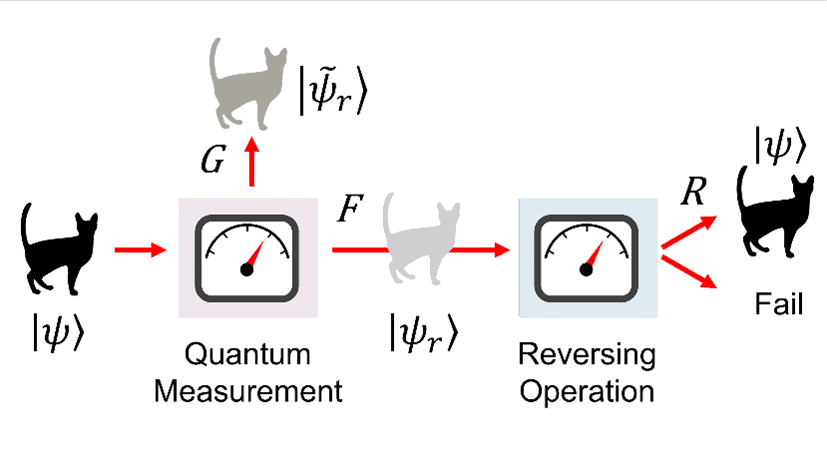 Phys. Rev. Lett. 128, 050401. Reused with permission.)
Phys. Rev. Lett. 128, 050401. Reused with permission.)A strange feature of quantum systems is that observing them inherently changes their quantum state. More precisely, the act of measurement redistributes the information contained in a quantum system. Now, physicists in South Korea have refined this idea further, experimentally demonstrating a three-way information split in quantum measurements. The result could have applications in understanding information flow during measurements and optimizing protocols for quantum information processing.
Theorists had previously shown that during measurement, information encoded in a quantum state becomes split between the measurer, the measured state, and information that can be recovered. The measurer’s information is known as extracted information, since this is the information they gain by measuring the system. The information left in the measured state is known as transmitted (undisturbed) information. Finally, there is some chance of recovering the system’s original quantum state by performing a reverse operation on the measured system. The maximum probability of restoring the state is known as the reversible information.
The magnitudes of the three types of information vary depending on the type of quantum measurement being performed. For instance, a weaker measurement gives the measurer less information (less extracted information), leaving more of it in the measured state (more transmitted information) and making it less probable that the original state will be recovered (less reversible information). The best balance of the three will depend on the purpose of the measurement.
Types of measurements can be further distinguished by how the sum of the three types of information compares to the information in the quantum state. Whereas optimal measurements preserve the total information in the quantum state, such that it is entirely split between the three types, in non-optimal measurements some information is lost. This lost information can be due to noise in the experiment or inefficient estimates of the original quantum state. Yet sometimes it is inherent in the quantum measurement itself. Such inescapable information loss in non-optimal measurements could give insights into how the classical world appears to emerge from quantum measurements.
Preserving three-way information using photons
In their experimental study, which is published in Physical Review Letters, Seongjin Hong and colleagues at the Korea Institute of Science and Technology and the Korea Institute for Advanced Study showed how the information about a quantum state splits into these three parts. The researchers used photons to experimentally demonstrate information-preserving optimal measurements in which each photon could be in one of three possible states. They then used optical components to perform measurement and reversing operations on the photons, before characterizing their final states and demonstrating the quantitative balance between the three information types.
“The conditions for optimal measurements provide a useful guide for an optimal design of measurement-based quantum information processing protocols”, corresponding authors Seung-Woo Lee and Hyang-Tag Lim tell Physics World. For instance, to discriminate or estimate quantum states, the best strategy is to maximize information gained by the measurement and to minimize disturbance of the state. Alternatively, for tasks where it is important to reverse the measurement, such as quantum teleportation or quantum error correction, the reversibility should be maximized and information gain minimized.

Weak measurements track single nuclear spins
Lee and Lim say the team is now planning further studies of information loss in quantum measurement. They hope to tease out how this loss relates to the transition between the classical and quantum worlds. The results could also have interesting links to the second law of thermodynamics, which describes how irreversibility emerges over time. “One of our inequalities implies that the disturbance in quantum measurement never decreases by any subsequent reversing operation,” Lee and Lim explain, adding that the implied increase in disturbance is “intuitively plausible by the second law of thermodynamics”.
